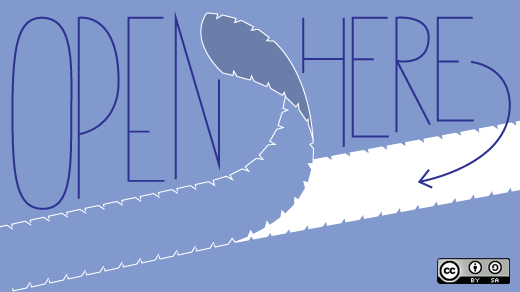I grew up in the VAX/VMS world. Our student computing system at the college I attended was a VAX 11/785, and when I would later work for the administrative computing department, they had an 11/780 as a test box, and an 11/785 and 8650 cluster doing production work.
Picture a room full of refrigerators all side-by-side, big tape drives, high-speed greenbar printers, all those lovely things that are now antiques—quaint artifacts of a time when computers were big and the air conditioners to keep them from melting down were even bigger. That was my world when I started my career, and it was where I worked for about a decade afterward.
In 2002, I hired on with a consortium of libraries migrating from a library automation system running on a DEC AlphaServer 2100 to a snazzy new system running Solaris. The office where I worked did not have a huge machine room, and they'd been running for some years on the much smaller AlphaServer, but the move was on toward even smaller, commodity hardware. PCs running Windows, not green-screen terminals, were on the desks, and there was a big server in the rack running the domain, plus file and print sharing for the organization. And over there, at the bottom of the rack, that little 1U server... What's that one do?
It was the DNS server for the domain, and it was running an operating system I'd never heard of—Mandrake Linux. The network admin took care of that and the Windows domain, so I didn't have anything to worry about. But I wanted to learn more about Linux, so I explored, carefully.
Despite my long partisanship for big-iron OSes, it was love at first sight. I had a test server up and running Mandrake before long. Overall I was happy with it, though at that time U.S.-based users were not as common as I'd have liked for supportability. In asking around, I found an awful lot of Americans were using Debian, so a year or so after I joined the organization we migrated. I've been a fan of Debian and its derivatives ever since. My first installation of Debian was "Woody," and I've run every release since then for some purpose.
From 2008 to 2013, I was heavily involved in the development and use of Koha, which was built on Debian, and whose development is still centered there. Once, just for kicks, I installed Debian and Koha on an ASUS EEEpc 900—half a gig of RAM, 4GB of NVRAM as a disk—just to see if I could. It didn't run well, and only had room for about 20 bibliographic records, but it ran. Since 2013, I've worked for cPanel, and the jump from Debian to CentOS has occasionally tripped me. Still, I've got my feet in both worlds; my personal servers all run Debian, while CentOS rules at work. My personal laptop runs Lubuntu.
Do I miss the old closed source OpenVMS world? Sure. There was something really powerful in entering SET PROCESS/PRIVILEGES=CMKRNL,SYSNAM and getting into the guts of the system. It was heady business, no doubt. But our technological evolution has left those things behind, mostly, and given us an operating system that is flexible, adaptable, and installable on some of the smallest and cheapest hardware around. And for the most part, I think that's a good thing; it's empowered us as an industry in new and exciting ways.







2 Comments